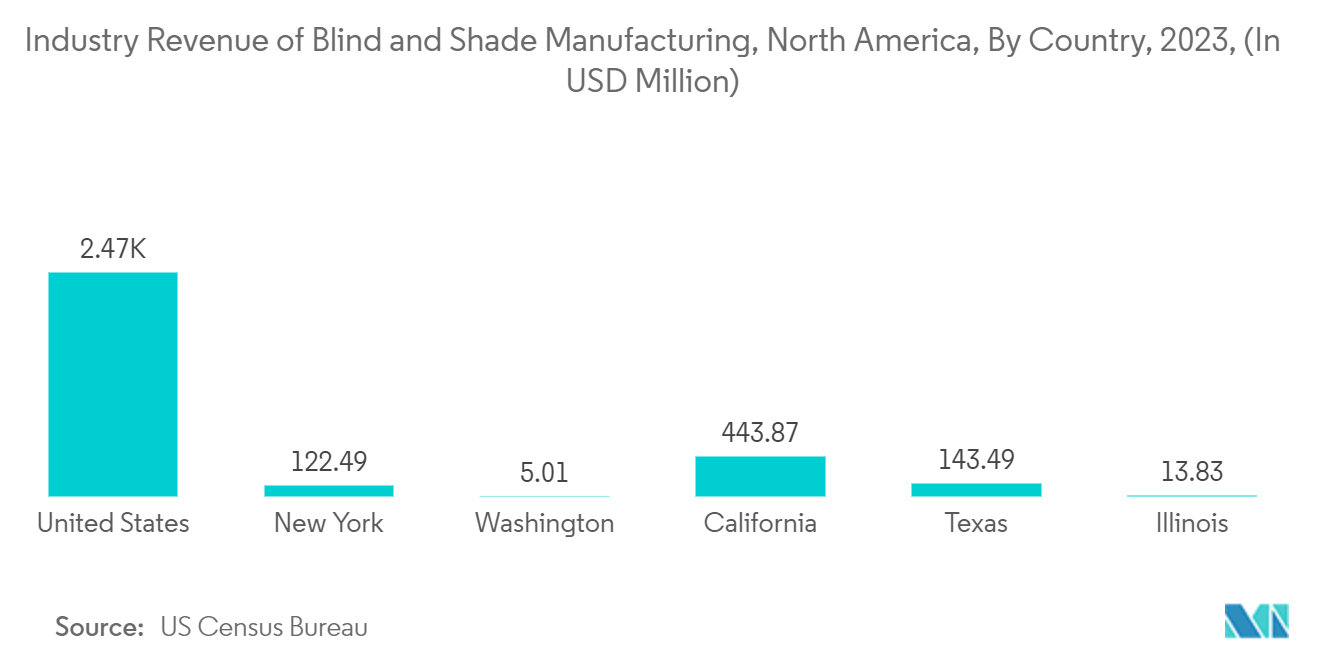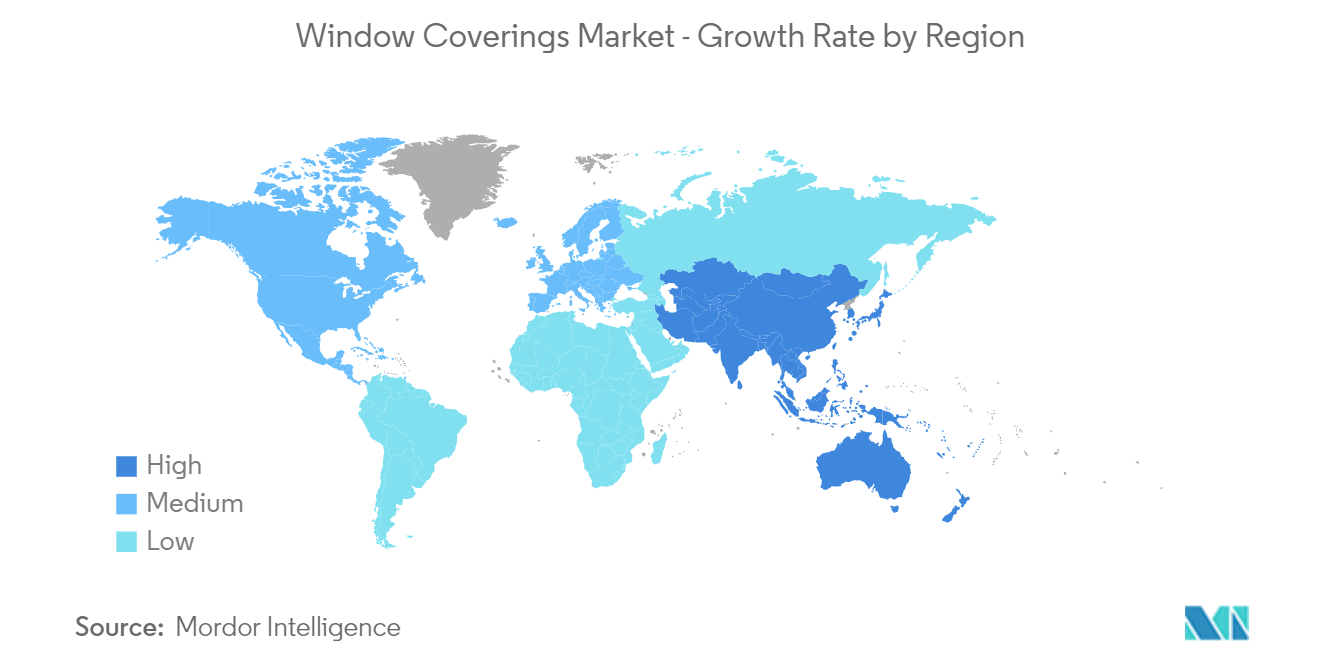Market Trends of Window Coverings Industry
Blinds Segment is Expected to Hold Significant Share
Blinds are a great option for residential or rental applications because they are among the least expensive window coverings. A 2-by-4-foot window can have miniblinds made of aluminum or conventional vinyl for a very affordable price.
Blinds include Venetian, vertical, roller, and other blinds (soft, pleated). A typical window blind comprises multiple long vertical or horizontal slats of various hard material types. The materials, including wood, plastic, or metal, are held together by cords that run through the blind slats. Venetian blinds have been widely adopted in office buildings to regulate light and air.
Therefore, multiple commercial-based upcoming projects worldwide promise a wider adoption. Vertical Louvre Blinds are used to control the light and can open fully by drawing them to a single side of the window. Roller blinds can be rolled down and up either fully or partially for light control, although translucent materials will allow light entry while maintaining privacy.
Along with the rising trend of installing intelligent systems in homes, the installation of automated roller blinds is also rising in the studied market. These window coverings could be controlled through various mobile applications. They can readjust position with the outdoor and indoor temperatures and are expected to become a stable alternative to traditional blinds in smart homes during the forecast period.
Additionally, as multiple initiatives emerge on sustainable commercial constriction, such as the German Federal Ministry of Economic Affairs setting benchmarks for low primary energy consumption, the above data was collected from an office building in Frankfurt, Germany, over four years. This highlighted the daylight factors in the workspaces from Venetian blinds with different blind positions and ceiling panels above the desks. Also, the occupants' interactions with windows and blinds were considered essential aspects of passive cooling concepts. This is likely to fuel the automation and motorization of blinds shortly.
Venetian, vertical, roller, and other blinds (soft, pleated) are examples of shutters. Several long, horizontal, or vertical slats of hard material are typically used to construct window coverings. The components, which might be made of wood, plastic, or metal, are joined by cables that pass through the slats of the blinds. Global demand for smart home automation-related gadgets is rising, and various home stores are selling products like smart dimmers and motion sensor kits.
Window blind producers benefit from the expanding trend of employing sustainable or green materials in product development. There is a changing trend in the layout and decoration of homes and businesses. Automated window blinds are anticipated to increase in demand because of their high quality, convenience, and safety. The market for window blinds is expanding, but it is being constrained by growing costs and questions about durability.

Asia Pacific to Witness the Significant Growth
The studied segment explores the ongoing trends and drivers for window coverings in various countries located in the Asia Pacific. The region is marked by multiple vendor activities and the presence of a viable customer base which facilitates the expansion of window coverings sales in the countries and presents firm opportunities for companies operating in the studied market.
The COVID-19 pandemic compelled movements to be restricted to homes, which was identified with a growing interest in beautifying houses, positively impacting the studied market. Customers took an interest in various kinds of window coverings to enhance the aesthetic of their homes. Although on the manufacturing end, the pandemic induced large-scale disruptions in the supply chain of window coverings.
In the Asia-Pacific region, the studied market is driven by the steady increase in the urbanization rate in the developed countries and the emerging economies of the area. According to Seventh Population Census conducted in 2020, 63.9% of the total population of China lived in cities in 2020. Furthermore, according to the urbanization blueprint released by the Communist Party and State Council, China targets 70% urbanization by 2030.
While considering South Korea, the presence of smart home device makers has been aiding smart home penetration. Multiple government initiatives and investment policies have aided the country's production and consumption of smart window coverings.
Aligned with the rising trend of installing intelligent systems in homes, the studied market is characterized by installing automated roller blinds. These window coverings could be controlled through various mobile applications. They can readjust position with the outdoor and indoor temperatures and are expected to become a stable alternative to traditional blinds in smart homes during the forecast period.

